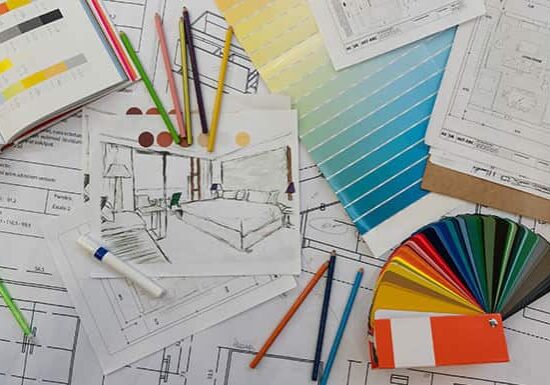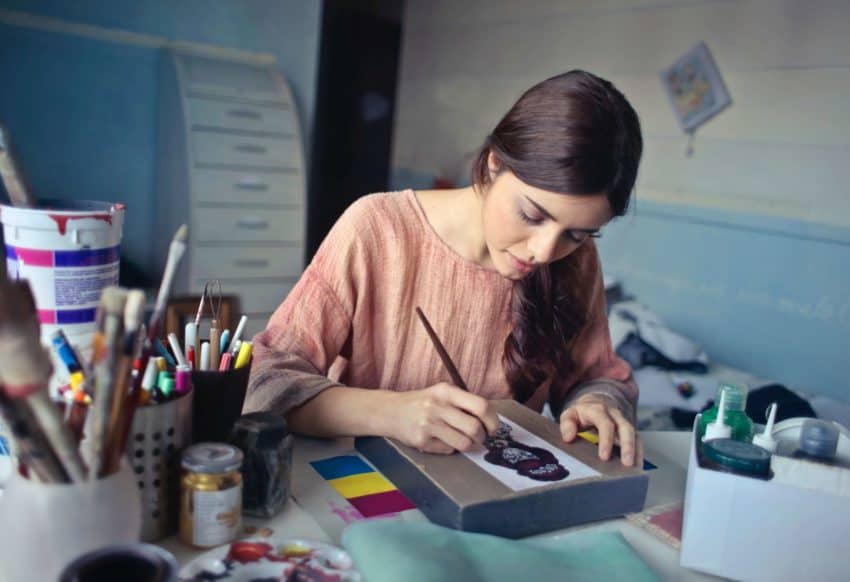Visual Designer vs Graphic Designer — Differences You Should Know
Updated: June 19, 2024
Published: March 9, 2020

While graphic designers and visual designers may seem like similar roles, there are some key differences between these two jobs. If you are considering a career in design, it is imperative that you understand these differences so that you can choose the job that best suits your interests. Let’s do a comparison of visual designer vs graphic designer so that you can determine your ideal career path!
What is a Graphic Designer?
The goal of a graphic designer is to communicate an idea to customers through the use of text and images. This job has been around since before the latest digital innovations — graphic designers have traditionally focused on producing content for print media. Examples include magazines, brochures, and catalogs.
They are also used for creating advertisements. When doing their work, graphic designers are in charge of selecting the fonts, colors, pictures, and words that they use when delivering their message to readers.
Because web design has become a popular form of communication, graphic designers have expanded into new service offerings such as web design. In fact, many graphic designers are now capable of designing a website. Today, knowledge of web design is just as important to graphic designers as their traditional areas of knowledge.

Photo by Andrea Piacquadio from Pexels
What is a Visual Designer?
Unlike graphic designers, visual designers focus entirely on digital media. They are responsible for designing the look and feel of the organization’s online presence.
Visual designers are also known as the “problem solvers” of the design world as they build the organization’s design strategy and determine what goes into the brand’s voice. While graphic designers aim to convey a specific message in each project, visual designers have the goal of conveying a specific brand voice across digital platforms.
The deliverables that visual designers are normally expected to produce include icons, logos, and presentations.
Visual Design and Graphic Design Overlap
Because both of these professions focus on aesthetics, they are often confused with one another. The lines between the two professions are becoming especially blurred in recent times due to the popularity of communicating over the internet. With graphic designers moving towards web design, a lot of the work they do overlaps with the functions that visual designers perform on digital platforms.
Main Differences

The first major difference is the goal that each of these professions entails. Graphic designers aim to communicate a specific message to consumers. Visual designers, on the other hand, are responsible for crafting a unified image for the brand across digital communication platforms. The voice, look, and feel of the brand will, therefore, need to remain consistent.
The second large difference is the various mediums of communication in which they are involved. Graphic designers were originally involved in print media such as newspapers and magazines, and are only now expanding into web design. Visual designers, however, have always focused on digital platforms. Their work is not concerned with traditional print media.
Graphic designers are expected to create a unique message for every project that they undertake. This is not a requirement that visual designers follow, however, as they are more concerned with creating a unified voice that will be presented across digital channels.
What are the Requirements for These Careers?
Graphic Designers
The skills that you will need to possess in order to become a graphic designer include proficiency in design softwares such as: Photoshop, Illustrator, InDesign, Affinity Designer, and Affinity Photo.
You should also consider pursuing a bachelor’s degree in Graphic Design.
While knowledge of coding is not a requirement, it might prove beneficial if you become involved in aspects of web design. HTML and CSS are popular examples of coding languages that you could learn.
Visual Designers
To become a visual designer, there are a number of university degrees that you could consider studying. Graphic Design, Fine Art, Advertising, and Communications are all fields that you could consider majoring in should you wish to become a visual designer.
Also worth considering is the Bachelor of Science in Business Administration degree offered by the University of the People. This degree offers courses such as business communications and marketing that will help you better understand your responsibilities as a visual designer.
What’s great about studying through the University of the People is that all courses are 100% online and tuition-free, giving you the flexibility to pursue other job requirements while you study.
Other skills that you should become proficient in include Photoshop, Sketch, Illustrator, and Adobe XD. Coding skills are not a requirement as the work that you will do as a visual designer will not include coding.
How Much Does Each Designer Make?
Graphic Designers
According to Glassdoor, the average salary that you could expect to make as a graphic designer is $44,332 per annum.
People in entry-level graphic design positions can expect to earn around $35,000 per year, while top graphic designers can earn as much as $72,000 per year.
Visual Designers
Visual designers stand to earn significantly more than their graphic design counterparts. The average salary for visual designers on Glassdoor is $74,106 per annum.
An entry-level visual designer earns around $44,000. Top visual designers can expect to earn approximately $90,000 per year.
Other Design Careers that May Interest You

Photo by Jopwell from Pexels
1. UI/UX Designer
User Experience or User Interface designers focus on optimizing the way in which users interact with a website. They will determine what happens when users click on a button as well as the colors, shapes, sizes, and fonts used on the website. The goal of such designers is to make the website easy to use and attractive.
2. Digital Artist
This is someone who uses technology to produce a form of artwork. Examples of this include enhancing photographs using Photoshop, designing video game characters, and creating animations. Digital artists produce graphics that are rich in multimedia, such as sound effects, videos, and pictures.
Which Career is Best for You?
No matter what your preferences are, it is important to consider that traditional graphic design jobs are becoming less common in the digital world. The demand for web skills is on the rise, while print media is on the decline.
If you are interested in coding, then being a UX/UI designer might be the job for you. If you are someone who is more interested in the artistic aspects of the design world, then being a visual designer, graphic designer, or digital artist may be a better fit. Plus, if you are not interested in coding, then you will not have to learn to code in order to do either of these three jobs.
Whatever path you choose, there are many designing jobs that you can choose from, each of which offers competitive salaries and great perks to those with a creative mind.
